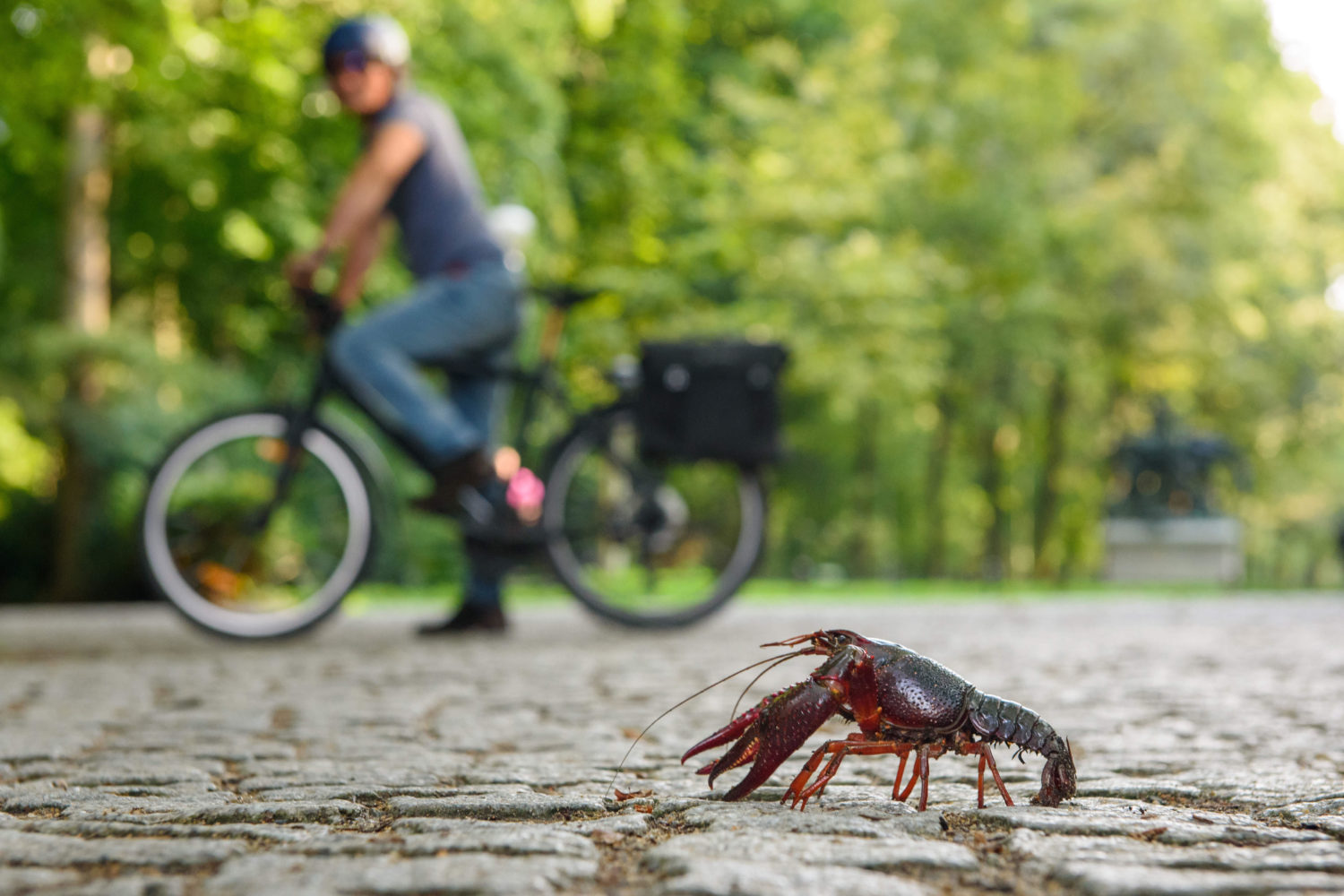Stuck in Their Craw
An iconic Louisiana species takes Berlin
Published: August 30, 2019
Last Updated: June 27, 2023

Gregor Fischer / Alamy
A cyclist looks at a Louisiana crawfish walking along a path in Berlin’s Tiergarten.
Editor’s Note: Not all stories with a strong Louisiana connection take place within our borders. Occasionally, we’ll bring you looks at Louisiana’s role in the wider world, honoring places far and wide with a temporary status as our 65th parish.
Louisiana has long struggled with invasive species, battling nutria, apple snails, toxic tree frogs, and a plethora of other animal adventurers who’ve found a new niche in the Bayou State. Now, for once, the traffic is going the other way. The Louisiana crawfish, known as Procambarus clarkii or simply dinner depending on context, has been introduced, deliberately or accidentally, into a number of places across the globe. Our crawfish are feeding folks in China, hunting disease-carrying snails to keep Kenyans healthy, and most recently (and most amusingly) surprising German park-goers.Most likely introduced to the environment as released pets, Louisiana crawfish have established a foothold in the ponds of the Tiergarten, a large and beloved public park in Berlin. News reports describe the crawfish as startling unprepared walkers on the paths and scuttling near the Spanish Embassy. Because the Tiergarten began its existence as a hunting park for the Electors of Brandenburg, anti-poaching laws protecting wild game in the park initially kept the crawfish safe from adventurous German gourmands.
But the continually rising numbers of crawfish, along with evidence that they were harming native crawfish populations in Germany and elsewhere in Europe, has led to governmentally sanctioned efforts to reduce populations—the Louisiana way. Local fishers have been granted permits to catch the crawfish and sell them to restaurants, but small catches and skeptical diners have kept the market small. (Native species of crawfish have historically been eaten in Germany, but most indigenous shellfish are now protected species.)
Recent research indicated that P. clarkii may be able to clone itself—bad news for those startled Germans and the European crawfish being crowded out by the Louisiana species, but good news for all of us who would hope for a limitless supply of meaty tails. (For those readers who are now envisioning a never-ending crawfish boil: apparently the crawfish can only clone itself before it is cooked.)
Fortunately for our friends across the sea, crawfish can be made into sausage and goes well with beer, so they may yet find their way onto the German table.
